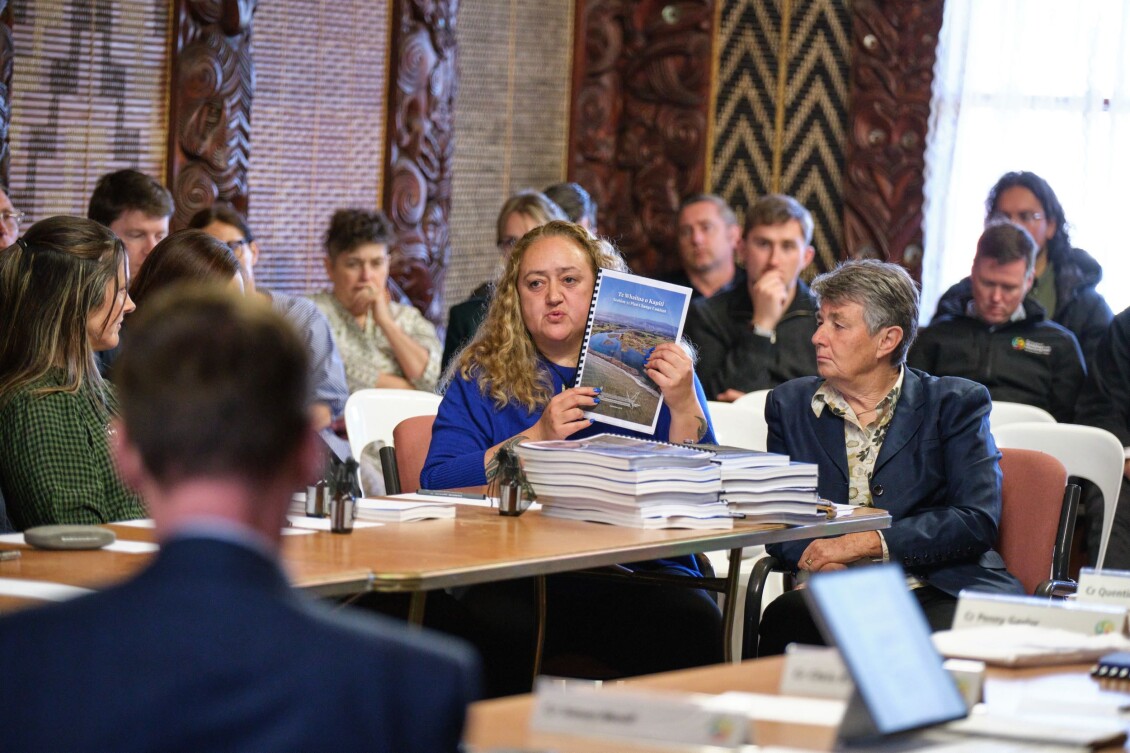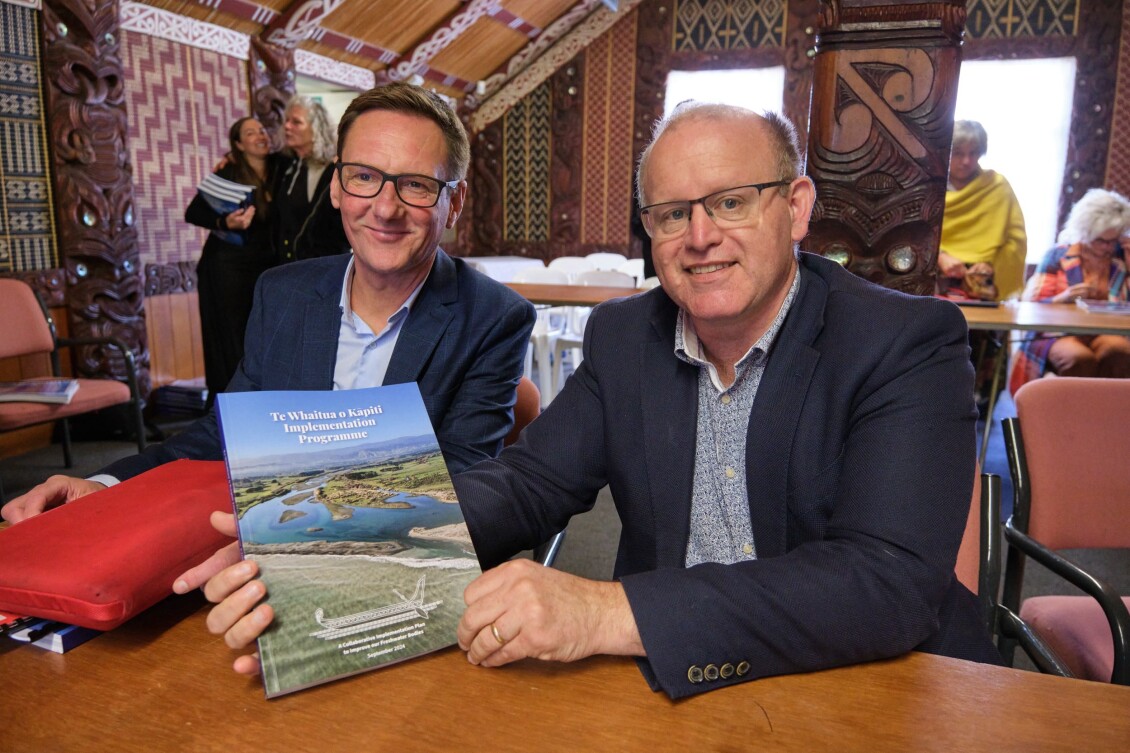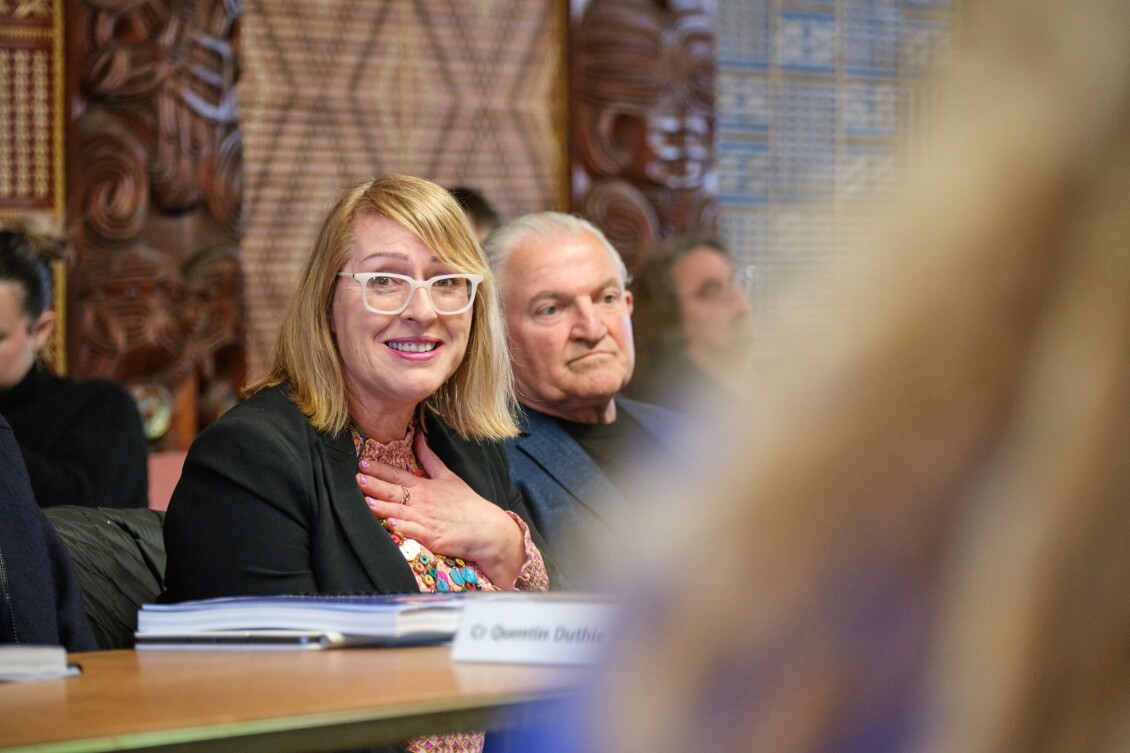Shared vision for healthy Kāpiti waterways combines western science and mātauranga Māori


A foundational document setting out a vision of healthy waterways and thriving communities changed hands today at Raukawa Marae in Ōtaki, where Te Whaitua o Kāpiti Committee presented its Whaitua Implementation Programme to Greater Wellington.
Established in 2022, the 12-member committee comprises six mana whenua representatives from Ngā Hapū o Ōtaki, Ātiawa ki Whakarongotai and Ngāti Toa Rangatira, as well as six community representatives, including councillors from Greater Wellington and Kāpiti Coast District Council.
Committee member and Kāpiti Coast regional councillor Penny Gaylor says the programme responds to an urgent cry for help and action.
“This programme aims to restore the waters of Kāpiti to once again nurture the land and people, as it flows from the mountains to the sea,” Cr Gaylor says.
“We are united in our desire for clean waterways that sustain our lives and livelihoods.
“Restoring the district’s waterways is vital for maintaining the identities of mana whenua and the community’s connection with the environment.”
Kāwanatanga House Taurite and former Kāpiti Coast District Mayor Jenny Rowan says a collaborative spirit was brought to the Whaitua Kāpiti process to address the community concerns.
“Three-hundred responses from local residents to a 2022 survey helped to shape the programme with their desire for waterways from which we can drink and swim,” Ms Rowan says.
“In this programme, western science and mātauranga Māori were interwoven, bringing community and mana whenua together to share a vision for freshwater management.
“Greater Wellington will now move to an implementation phase to carry the programme's recommendations forward, as we continue to work closely with the Kāpiti Coast District Council, community, and mana whenua.”
Te Whaitua o Kāpiti recommendations are unique as they were developed through the Tiriti House Model, designed by Professor Whatarangi Winiata of Ngāti Raukawa as a framework for collaboration and decision making.
Mana Whenua House Taurite Aroha Spinks of Ngāti Raukawa, Ngā Hapū o Ōtaki descent, says developing the programme through the model’s Mana Whenua, Kawanatanga and Tiriti houses ensured “true partnership”.
“In the spirit of Te Tiriti o Waitangi, the model is a framework for equal partnership and decision making, which we used to set a clear direction for returning Kāpiti waterways to health,” Dr Spinks says.
“To make this programme, we brought together under one roof a firm understanding of the acute threat of climate change with solutions from our traditional knowledge of rivers, floodplains, wetlands, forests, and coastal dunes.
“Kāpiti streams and lakes are degraded – their mauri (life force) waning. Our rivers are un-swimmable, full of sediment, their mana diminished.
“Our programme aligns the management of freshwater with the fundamental concept of Te Mana o te Wai, to restore the balance between the environment and the needs of the community.”
The programme’s recommendations include:
- Upholding and achieving the committee’s expression of Te Mana o te Wai in Kāpiti,
- Developing a revised monitoring framework in partnership between mana whenua and Greater Wellington, including cultural and mahinga kai practices,
- Reconnecting the wider community with their wai,
- Habitat restoration and the protection of wetlands and estuaries,
- Addressing water allocation and setting environmental flows and limits.
The programme is also designed to give effect to the National Policy Statement on Freshwater Management.



Get in touch
- Phone:
- 0800 496 734
- Email:
- info@gw.govt.nz
